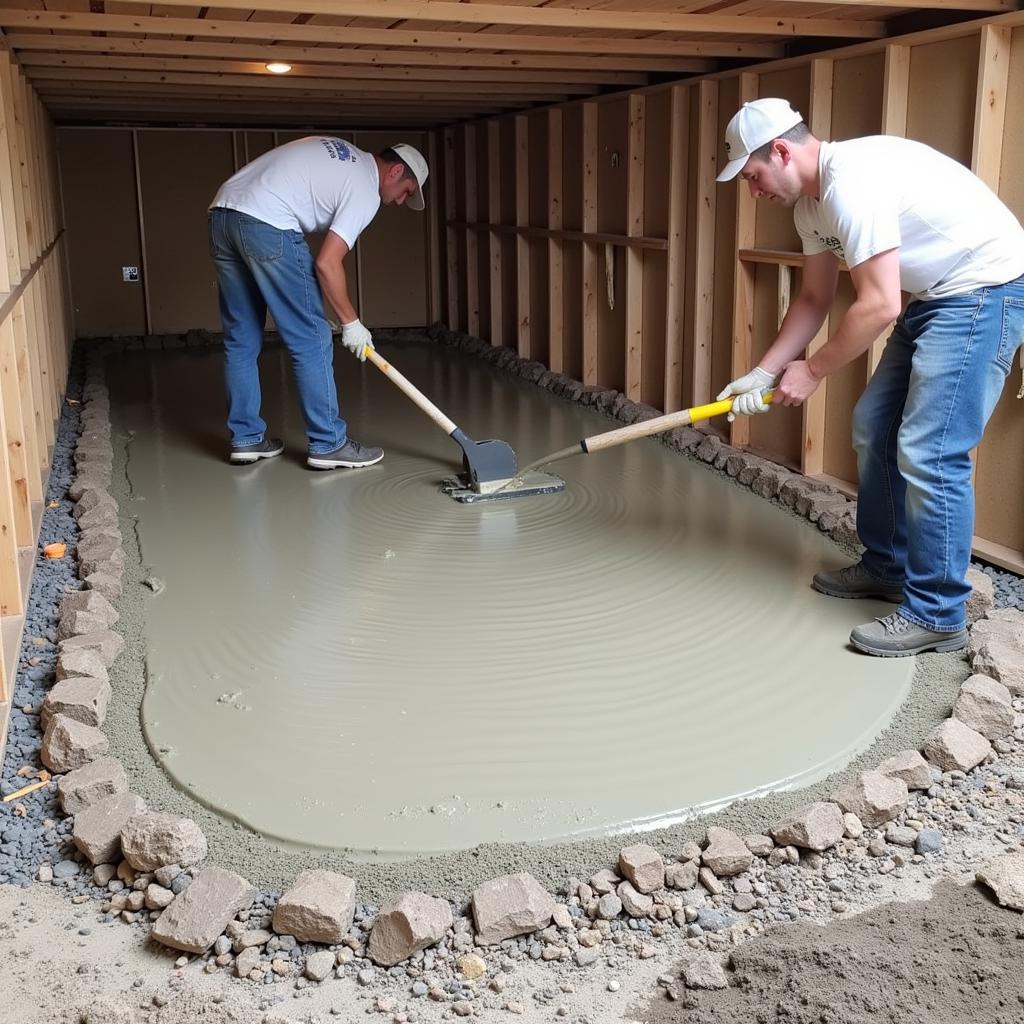Basements with Dirt Floors: A Comprehensive Guide
November 5, 2024Basements With Dirt Floors are a common feature in older homes, and can also be found in some newer constructions. While they may seem rudimentary, they offer a unique set of advantages and disadvantages that homeowners should consider. This guide will delve into the various aspects of dirt floor basements, from their benefits and drawbacks to maintenance and conversion options.
Understanding the Advantages of Basements with Dirt Floors
One of the primary benefits of a dirt floor basement is its inherent humidity control. The bare earth acts as a natural humidifier, absorbing excess moisture from the air and preventing the basement from becoming too dry. This can be particularly beneficial in arid climates, where dry air can cause issues with wood furniture and flooring. Dirt floors can also contribute to a cooler basement temperature during the summer months, providing natural insulation against the heat. Additionally, a dirt floor basement is typically less expensive to construct than a concrete one, providing significant cost savings during the initial building phase.
Finally, a dirt floor offers a level of flexibility for future renovations. Homeowners can easily excavate and modify the space to suit their changing needs, whether it’s adding plumbing for a bathroom or creating a sub-basement.
Dealing with the Challenges of Dirt Floors
While dirt floors offer certain advantages, they also present some challenges. One major concern is the potential for pest infestations. Insects and rodents can easily burrow through the dirt, making it crucial to implement effective pest control measures. Another issue is the inherent unevenness of a dirt floor. This can make it difficult to store items or create a usable living space. Dust and dirt are also a common problem, as the exposed earth can track into the rest of the house.
 Challenges of a Dirt Floor Basement
Challenges of a Dirt Floor Basement
Moisture control, while a benefit in dry climates, can also become a problem in humid environments. Excess moisture can lead to mold and mildew growth, posing health risks and damaging stored items. Finally, radon, a naturally occurring radioactive gas, can seep through the dirt floor, potentially causing health concerns.
Converting a Dirt Floor to Concrete: A Step-by-Step Guide
Many homeowners opt to convert their dirt floors to concrete for various reasons, including improved functionality and aesthetics. Here’s a step-by-step guide to the conversion process:
-
Planning and Preparation: This involves assessing the basement, measuring the area, and acquiring the necessary permits.
-
Excavation and Leveling: The dirt floor needs to be excavated to the desired depth and leveled to create a smooth surface.
-
Gravel Base: A layer of gravel is laid down to provide drainage and a stable base for the concrete.
 Pouring Concrete Over a Gravel Base in a Basement Conversion
Pouring Concrete Over a Gravel Base in a Basement Conversion
-
Vapor Barrier: A vapor barrier is installed to prevent moisture from seeping through the concrete.
-
Concrete Pouring: The concrete is poured and leveled to create the finished floor.
-
Curing: The concrete needs time to cure and reach its full strength before it can be used.
Maintaining a Basement with a Dirt Floor
Regular maintenance is essential for keeping a dirt floor basement in good condition. This includes:
- Regular Raking and Leveling: This helps prevent unevenness and keeps the surface clean.
- Pest Control: Implementing effective pest control measures is crucial to prevent infestations.
- Moisture Control: Proper ventilation and dehumidification can help prevent moisture-related problems.
Consulting the Experts
Speaking to a qualified contractor or basement specialist can provide invaluable insights into managing and improving your dirt floor basement. They can offer tailored advice based on your specific situation and help you make informed decisions about your basement’s future.
“A thorough assessment by a professional is crucial before undertaking any major work on a dirt floor basement,” says John Doe, a certified basement specialist with over 20 years of experience. “This will help identify any potential issues and ensure the long-term stability and functionality of the space.”
Conclusion
Basements with dirt floors present both opportunities and challenges. By understanding their unique characteristics and implementing appropriate maintenance and conversion strategies, homeowners can effectively utilize this often-overlooked space. Whether maintaining the dirt floor or converting it to concrete, careful planning and execution are essential for maximizing its potential.
FAQ
- Are dirt floors safe?
- How do I control dust in a dirt floor basement?
- Can I finish a basement with a dirt floor?
- What are the costs involved in converting a dirt floor to concrete?
- What are the best pest control methods for dirt floors?
- How can I prevent moisture problems in a dirt floor basement?
- What are the long-term maintenance requirements for a concrete floor?
Common Scenarios
- Scenario 1: High humidity causing moisture problems in a dirt floor basement. Solution: Install a dehumidifier and improve ventilation.
- Scenario 2: Rodent infestation in a dirt floor basement. Solution: Implement rodent control measures, such as traps and sealing entry points.
- Scenario 3: Uneven dirt floor making it difficult to store items. Solution: Rake and level the dirt floor, and consider installing a raised platform.
Related Resources
- Basement Waterproofing Guide
- Basement Finishing Ideas
Need help with your basement with dirt floors? Contact us! Phone: 0915117113, Email: [email protected] or visit us at: Tổ 3 Kp Bình An, Phú Thương, Việt Nam, Bình Phước 830000, Việt Nam. We have a 24/7 customer service team.